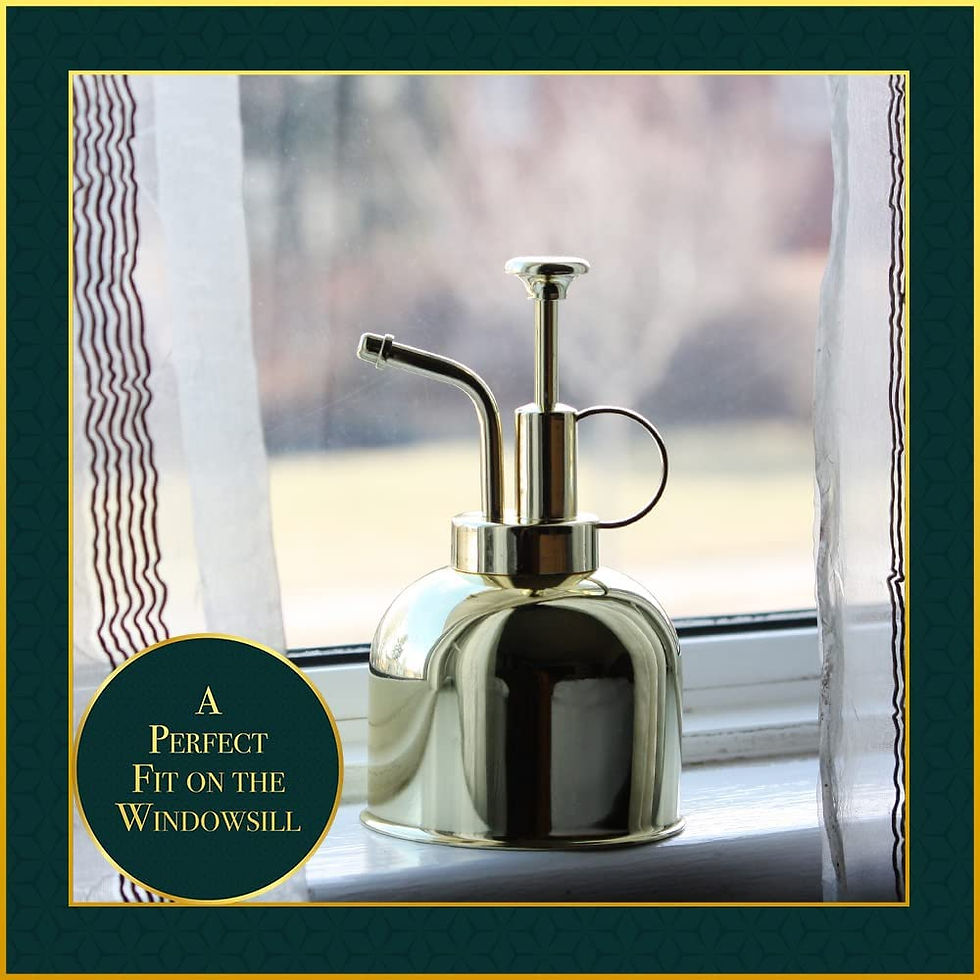Tips and Tricks for Effective Plant Misting
- Alive Central

- Jul 22, 2023
- 3 min read
Plant misting is a wonderful way to provide additional moisture and create a humid environment for your beloved plants. Not only does it help mimic their natural habitat, but it also offers numerous benefits for their overall health and well-being. In this blog post, we will explore some valuable tips and tricks to ensure that your plant misting practices are effective and beneficial for your leafy friends. Let's dive into the world of plant misting and discover how to provide optimal care for your plants.
Choose the Right Plant Mister
Investing in a high-quality plant mister is essential for effective misting. Look for misters with a fine spray nozzle that produces a gentle, even mist. Avoid misters with large droplets that can overwhelm the plant's foliage or leave water marks. Opting for a mister with a comfortable grip and easy-to-use design will make your misting routine a breeze.
Timing is Key When Plant Misting
Misting your plants at the right time is crucial for maximum benefits. Early morning is an ideal time as it allows the mist to evaporate gradually during the day, mimicking the natural dew that occurs in nature. Avoid misting late in the evening to prevent excess moisture on the foliage, which can lead to fungal growth or disease. Finding the right balance and consistency in misting will ensure optimal hydration for your plants.
Know Your Plants' Needs
Different plants have varying moisture requirements, so it's important to understand your specific plants' needs before misting. Some plants, such as tropical species or those with delicate leaves, appreciate regular misting to maintain their desired humidity levels. On the other hand, certain plants, like succulents or cacti, thrive in drier conditions and may not benefit from misting. Research and familiarize yourself with the specific needs of your plants to provide appropriate care.
Focus Misting on the Foliage
When misting your plants, direct your attention towards the foliage rather than the soil. The aim is to provide moisture to the leaves and create a humid environment. Mist the upper and lower surfaces of the leaves, ensuring an even coverage. Be gentle and avoid misting excessively, as this can lead to water pooling or dripping. Aim for a fine mist that settles on the leaves without saturating them.
Adjust for Humidity Levels
Misting frequency may need adjustment based on the humidity levels in your home or growing area. If you live in a drier climate or during winter months when indoor heating reduces humidity, you may need to mist more frequently to maintain the desired moisture level for your plants. Conversely, if you live in a humid environment, you may need to reduce misting or focus on plants that prefer drier conditions. Pay attention to the overall climate and adapt your misting routine accordingly.
Supplement with Proper Watering
While misting provides additional moisture, it should not replace proper watering. Remember that misting is a supplemental method to increase humidity, not the primary source of hydration for your plants. Regularly check the soil moisture and water your plants accordingly. Combine misting with a consistent watering routine to ensure that your plants receive the right balance of hydration both from the roots and the foliage.
The Joy of Misting
Effective plant misting is a valuable technique to enhance the health and well-being of your plants. By choosing the right mister (such as our Alive Central Plant Mister!), timing your misting sessions, understanding your plants' needs, focusing on the foliage, adjusting for humidity levels, and supplementing with proper watering, you can create an optimal environment for your leafy companions to thrive.
Embrace the joy of misting, and watch as your plants flourish in a beautifully humid space. Happy misting!




Comments